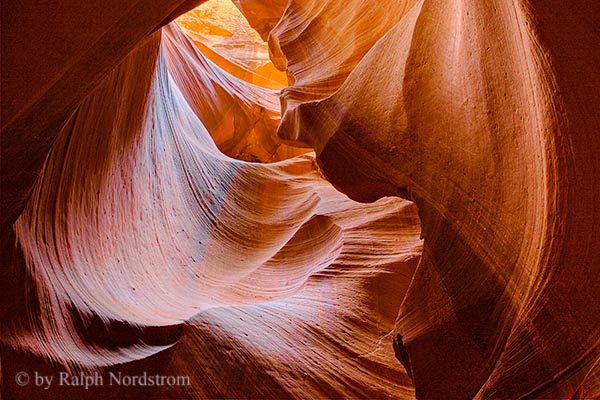I love flickr. It’s arguably the best photo sharing site for photographers. I get to see some really good, inspiring work from the other photographers I follow.
And, like most photo sharing sites, you can add comments. When I post photographs I always look forward to receiving feedback and encourage anyone who visits my page on flickr to leave copious comments, both complements and criticisms. If you haven’t visited yet, here’s the link.
http://www.flickr.com/photos/ralphnordstromphotography/
There’s an interesting pattern to the comments on flickr and other photo sharing sites. Most of the comments tend to of the flattering type or they tend to be technical.
The ‘flattering’ comments are words like ‘Spectacular,’ ‘Stunning,’ ‘Amazing,’ ‘Beautiful’ and the like. This no doubt means your photographs are having an impact on people and it’s nice to know that people are enjoying them. It’s also often a gracious complement which is always nice to receive. The thing that’s missing is anything you can use to grow as a photographer and artist.
The ‘technical’ feedback is comments like ‘great color,’ ‘good use of the rule of thirds,’ ‘nice leading lines,’ ‘you nailed that exposure’ and so on. These are comments that have to do with the things like composition, color palate, exposure, focus and all the other techniques you employ when capturing the image or during the post processing. This is good feedback on your technique and occasionally brings something to your attention that you may not have been aware of. These comments are more helpful.
 The comments you rarely see are ‘This photo gives me a feeling of peace and quite,’ ‘I can feel the energy,’ ‘There’s a lonely quality to this image,’ ‘This one is uplifting.”’ Comments like these are ones that get to the heart of art. Artists, no matter what their medium, create their works of art because they have something to say. Art is communication. The technical things we use serve the purpose of communication. It’s nice to know that the viewer appreciates your technique but it’s also nice to know what message the photograph communicated. At least for me, these comments are the most helpful.
The comments you rarely see are ‘This photo gives me a feeling of peace and quite,’ ‘I can feel the energy,’ ‘There’s a lonely quality to this image,’ ‘This one is uplifting.”’ Comments like these are ones that get to the heart of art. Artists, no matter what their medium, create their works of art because they have something to say. Art is communication. The technical things we use serve the purpose of communication. It’s nice to know that the viewer appreciates your technique but it’s also nice to know what message the photograph communicated. At least for me, these comments are the most helpful.
So here’s a suggestion to the viewer. When viewing an image, ask yourself, “What do I feel, what is it saying to me?” Linger on the image for a while and become aware of the effect it has on you, the emotion it creates in you. You’ll not only appreciate the image more but it can change the way you experience other art.
And to the photographer, I have this suggestion. When capturing an image ask yourself, “Why an I taking this photograph?” Try to connect with your subject and tap into the feelings you are having. To do this you need to slow down. In fact, there’s an exercise I like to do on photography workshops that helps students to do just that. When we arrive at a location I ask them to get out and leave their gear in the car. I ask them to slowly, quietly walk around and feel the area we’re about to shoot. When they get a sense of what it is saying to them then get their cameras and try to capture it.
Slowing down is something we have a hard time doing in our hectic lives. Art from both sides – that of the viewer and that of the artist – provides an opportunity to take things more slowly, to appreciate and understand them more fully. And magically, doing this can help us to understand ourselves more.
Join me on an upcoming workshop. Click here for more details.
To see more of my photographs click here.
(898)
